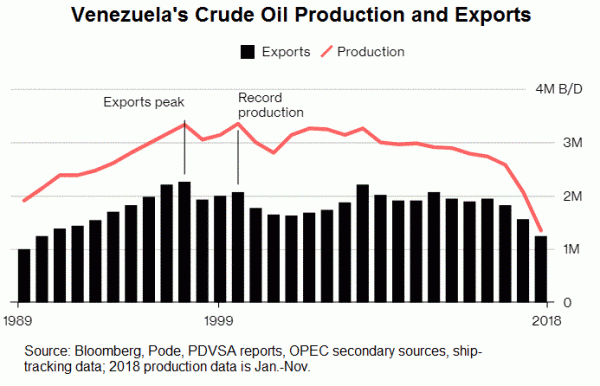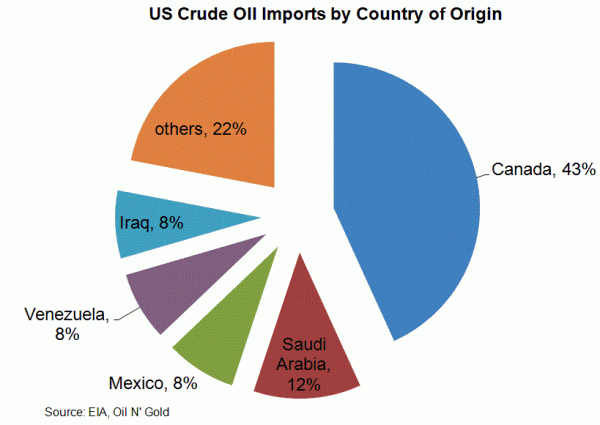Oil prices have got limited boost after the US imposed sanctions on Venezuela’s oil exports. The direction of oil price movement is ultimately driven by the expectations of demand and supply balance. Oil demand is anticipated to reduce for the years ago amidst global economic slowdown, which is intensified by the trade war between US and China, the world’s two biggest consumers. On the supply side of the equation, oil production is relatively easy to adjust in the US, thanks to the shale gas boom began more than a decade ago. While OPEC and its non-OPEC allies (OPEC+) have endeavored to support price via output cut, the commitment is in question as the participants have their own agendas. Despite agreeing to extend the output for a total of 1.2M bpd from January to June 2018, it is reported that Igor Sechin, Russian oil giant Rosneft’s CEO, has pressured president Putin to withdraw from the deal. It appears that risk is skewed to the downside on demand, but to the upside on supply.
As an OPEC member, Venezuela is exempted from output cut due to the dramatic decline in oil production due to US sanction. It is believed that sanction on a country’s oil exports would trim world oil supply in an aggregate basis, thus boost oil price. The case is not strong enough for Venezuela.
Despite possessing the world’s biggest oil reserve, Venezuela’s crude oil production has been low, below 2.5M bpd, since 2000s, largely driven by geopolitical issues and mismanagement of oil companies. The downtrend accelerated in recent years. It is estimated that the country’s output declined to 2.1M bpd and 1.3M bpd, respectively, in the first 11 months of 2017 and 2018. While exporting over 90% of its output, the slump in production suggests that exports were constrained. Last year, Venezuela exported only 1.2M bpd of its oil, compared with about 7M bpd shipped by Saudi Arabia.
The scarce amount of exports indicates that sanctions should have little, if any, impact on oil prices. Notwithstanding diminished reliance on overseas oil, the US remains the world’s second largest oil importers. EIA’s data show that Venezuela is the fourth largest supplier of US crude imports. Yet, it took up about 8% of the total imports, compared with 43% from Canada. Region-wise, refiners from Gulf Coast used to import most of Venezuela’s crude oil. However, since early 2018, the region has imported more crude oil from Canada than from Venezuela. According to the EIA, Gulf Coast imports of Venezuelan crude oil declined to 0.498M bpd in the first 11 months of 2018, compared with 0.618M bpd in the same period in 2017. Meanwhile, imports by these refiners from Canada soared +0.113M bpd from the same period in 2017. A key reason for such change is that Gulf Coast refiners are increasing their demand for lighter grade crude, as a result of “increased refinery capacity and availability of lighter crude oils”, as well as “transportation constraints” that “limit the availability of heavy crude oils”.
A more self-sufficient US oil market has change the country’s foreign policy. From the Iraq war in the era of George Bush to Barack Obama’s withdrawal from Afghanistan, much was to deal with US’ lust for oil, a major national interest of the country. It is not surprising for Trump, who has been pressuring Saudi Arabia to lower oil prices, to toughen his stance on Venezuela, as the influence of the Latin American state diminishes on US’ oil security policy.















